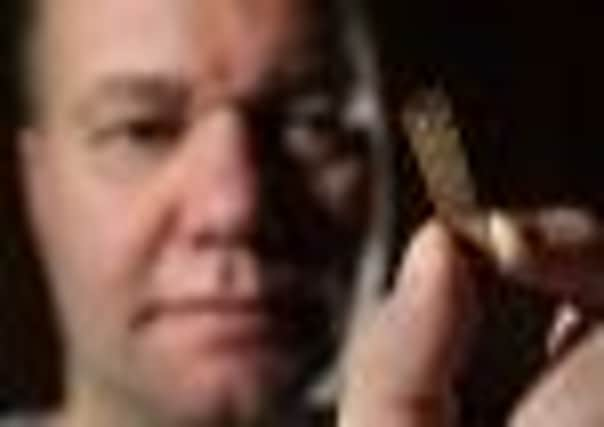Video: Hair’s what they dug up under the York Guildhall


Archaeologists have disclosed some of the finds they have unearthed during excavations centred on the medieval Guildhall in York, including a fragment of a comb from Viking times and a wig curler from the 1700s.
The dig was carried out over the summer months to delve into the foundations of York’s home of democracy and its civic origins in the hope of revealing artefacts from the past. Few excavations had been carried out in this area and they had not been thoroughly documented so York Council’s senior officers decided the work was a good opportunity to learn more about the seat of local democracy.
Advertisement
Hide AdAdvertisement
Hide AdDr Mark Whyman, of York Archaeological Trust (YAT), which was commissioned by the local authority to carry out the work, unveiled some of the finds from the dig, which was carried out as part of the celebrations to mark the city’s 800th anniversary since being granted a Royal charter.


The work has only focused on a small area, but it has revealed a valuable snapshot of local life and experts now believe they have evidence the site had been inhabited before it became the home of York’s main civic building.
The trust dug three trenches – one in the cellar beneath the arch of the Mansion House, another in the Guildhall Yard and a third beneath the Guildhall in the underground Common Hall Lane.
Besides finding fragments of Roman pottery, the dig revealed a finely-built wall which may have been part of a Common Hall pre-dating the present Guildhall, itself built in the 1440s. It also unearthed evidence of domestic waste that suggested the area was being lived in before the Common Hall became a civic building.
Advertisement
Hide AdAdvertisement
Hide AdDr Whyman said: “These three small excavations have produced results far exceeding their size.
“As well as the significance of the archaeological evidence, the work has aroused a great deal of public, official and media interest, and highlighted the importance of the history of the Guildhall in the development of civic society in York.”
The archaeologists were given permission to carry out the excavations by York Council as part of the year-long celebrations for the 800th anniversary since York was granted a Royal Charter by King John on July 9, 1212.
The Guildhall is one of the city’s most important buildings, but prior to the excavations very little was known about it as a structure. However, the discovery of a finely-built wall by archeologists has revealed the existing medieval building was built on the foundations of a previous structure.
Advertisement
Hide AdAdvertisement
Hide AdLife in York has revolved around the Guildhall for more than 700 years. It has featured in some of the city’s most famous events, including the trial of Margaret Clitheroe, a Catholic martyr who later became a saint after she was executed for her beliefs on March 25, 1586.
The official ceremonies to appoint the city’s Lord Mayors have taken place since the 13th century under the arching roof of the main Guildhall, which is 93ft long, 43ft wide and almost 30ft high.
While the excavations were taking place, archaeologist Mick Aston, who was a member of Channel 4’s hugely popular show Time Team, toured the dig in August.
The project has also attracted interest from members of the public who watched, talked about and even got into the Guildhall Yard trench to help.
Advertisement
Hide AdAdvertisement
Hide AdIt was the first time modern techniques, including three-dimensional laser scanning, have been used at the site.
Dr Whyman will give a talk tomorrow in the Guildhall’s Council Chamber at 6pm which will highlight the work that has been carried out.
York Council’s cabinet member for leisure, culture and tourism, Coun Sonja Crisp, said: “Mark’s talk will indicate the importance of this summer’s excavations, not only in terms of our understanding of medieval society but also in terms of York’s evolution into a democratic society.
“I’m so pleased that the dig has gone so well and am looking forward to finding out more from him.”
Advertisement
Hide AdAdvertisement
Hide AdYork Council is due to move into new multi-million pound headquarters at West Offices, built in the 1840s as the original railway station and station hotel and the future use of the Guildhall has yet to be determined.
Last month the local authority invited architects to develop ideas for the Guildhall, the connected office accommodation, river frontage and boat yard, as part of a competition run by The Royal Institute of British Architects.
Anyone wishing to reserve a place at Dr Whyman’s talk can contact [email protected] or call 01904 551027.